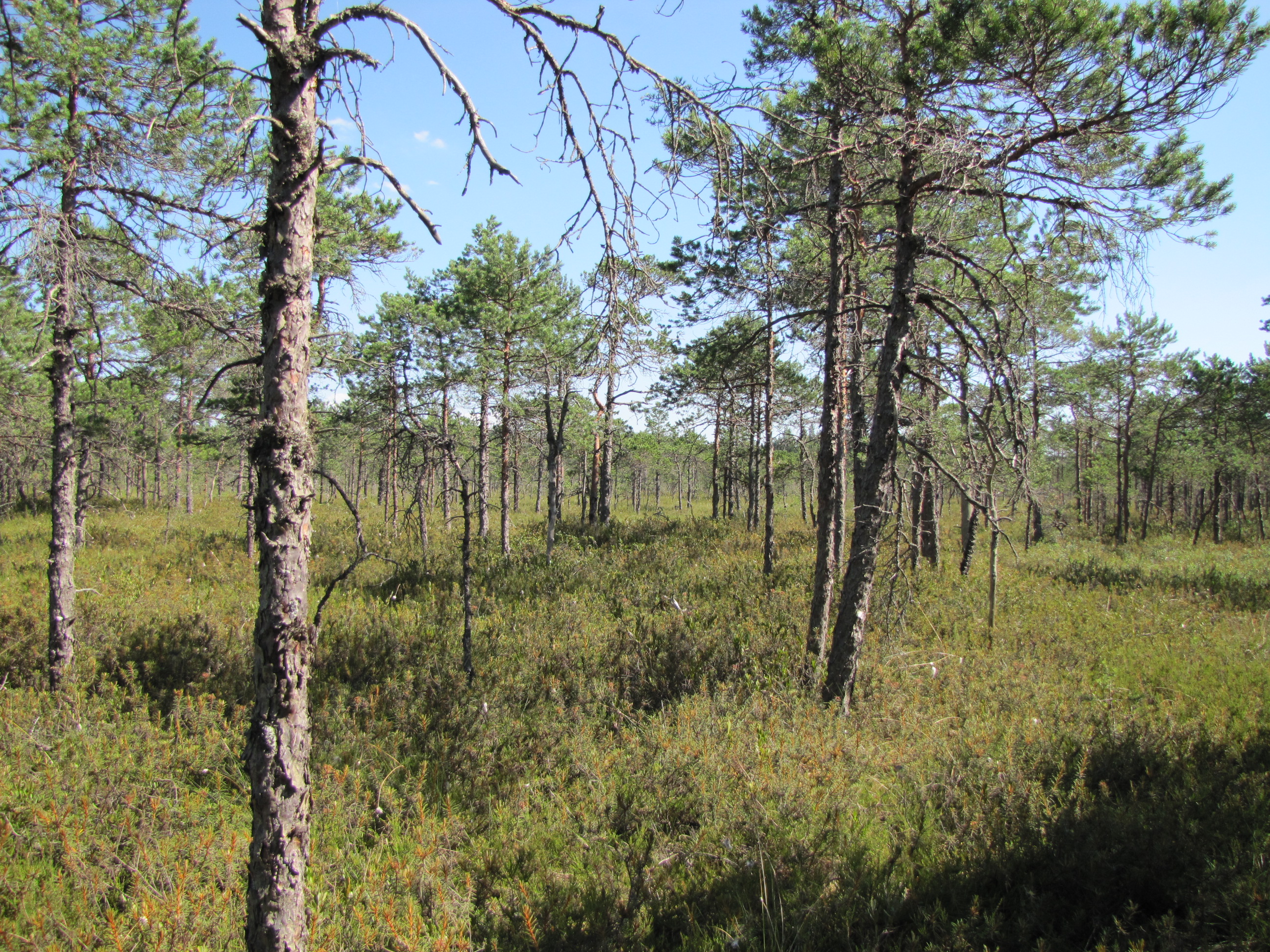
This habitat type differs from the types of transition mires and quaking bogs (7140) and active raised bogs (7110) with a significantly denser and taller tree layer (tree canopies cover at least 30% of the sky – canopy cover 0.3 – and the average height of the trees is more than four metres). As the bog woodland is an intermediate stage between the fen forest turning into a bog forest, the moor birch and pine form the tree layer here, while pine dominates in the bog forest. The undergrowth in the bog woodland is mosaic, as it is in the open and wooded transition mires: peat moss clods are dominated by bog plants, and fen species grow between the clods. A bog forest is characterised by a particularly strong shrub and prostrate shrub layer with dwarf birch, marsh Labrador tea, bog bilberry, as well as leatherleaf in Eastern Estonia.
A bog forest can be found on smaller areas all across Estonia. Bog woodlands grow mainly on the edges of bog areas and flat lowlands. They are more abundant in North-Eastern, Central, and Western Estonia.
Includes the following habitat types according to Paal: 1421 (mixotrophic (transitional) bog forest site type) and 1431 (ombrotrophic bog forest site type).